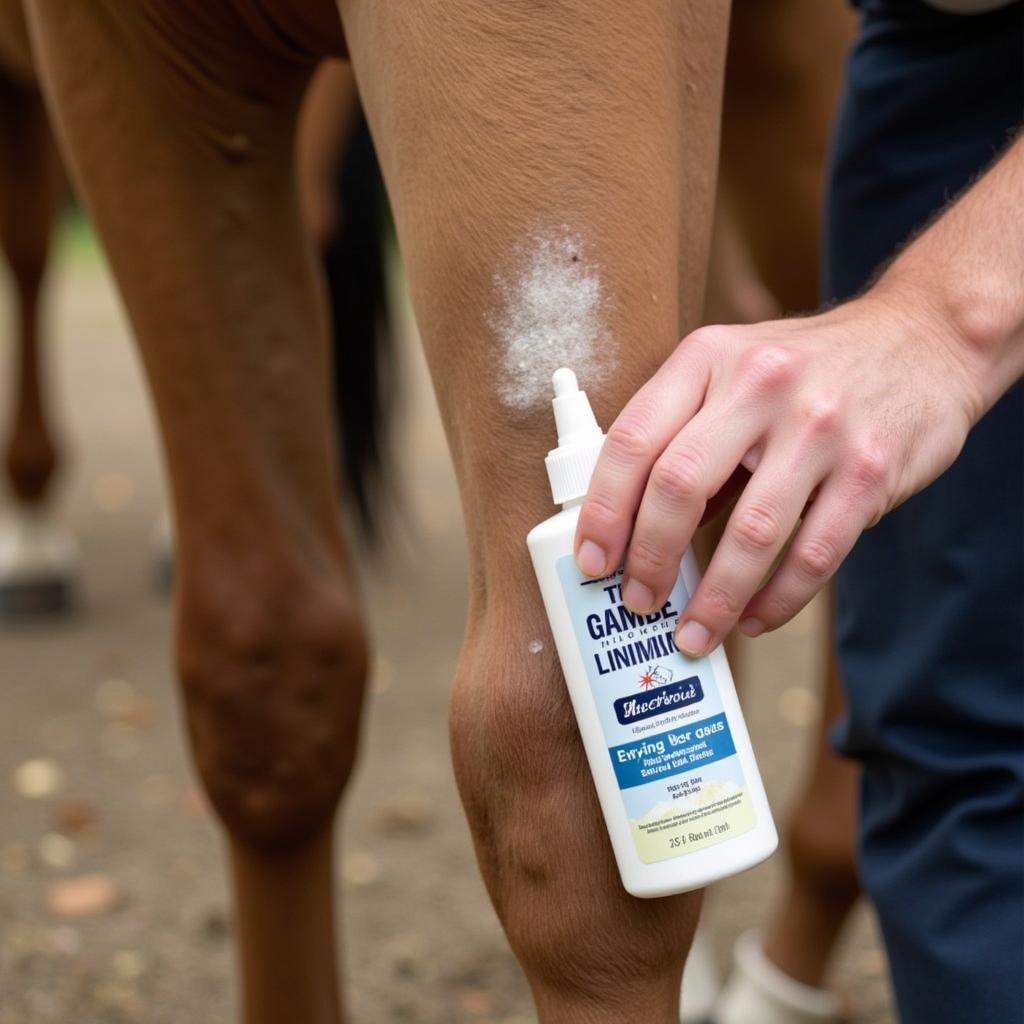Bigeloil Horse Liniment is a topical treatment used for horses to soothe sore muscles and joints. This comprehensive guide will delve into the benefits, uses, and precautions of using Bigeloil horse liniment, providing horse owners with the information they need to make informed decisions about their horse’s care.
Understanding Bigeloil Horse Liniment
Bigeloil is a time-honored remedy known for its warming and soothing properties. It’s often used after strenuous exercise to relieve muscle stiffness and soreness. But what exactly makes it work? The liniment typically contains a combination of ingredients like menthol, camphor, and essential oils, which work synergistically to provide relief. These ingredients create a warming sensation that increases blood flow to the affected area, helping to reduce inflammation and pain.
Benefits of Using Bigeloil
- Soothes Sore Muscles: Bigeloil’s primary benefit lies in its ability to ease muscle discomfort after strenuous workouts or minor injuries.
- Reduces Inflammation: The active ingredients in Bigeloil can help reduce localized inflammation, further contributing to pain relief.
- Improves Circulation: The warming sensation caused by Bigeloil promotes blood flow to the treated area, aiding in the healing process.
- Easy Application: Bigeloil is typically easy to apply and can be massaged into the affected area.
 Applying Bigeloil to a Horse's Leg
Applying Bigeloil to a Horse's Leg
How to Use Bigeloil Horse Liniment Safely and Effectively
Applying Bigeloil horse liniment properly is essential to ensure its effectiveness and prevent any adverse reactions. Always follow the manufacturer’s instructions. Generally, you should apply a small amount of liniment to the affected area and massage it in gently. Avoid applying Bigeloil to open wounds or irritated skin.
Precautions and Potential Side Effects
While generally safe, Bigeloil can cause skin irritation in some horses. It’s crucial to perform a patch test before applying it to a larger area. Observe the area for 24 hours for any signs of redness, swelling, or itching. If your horse experiences any adverse reactions, discontinue use and consult a veterinarian. Also, avoid contact with the horse’s eyes and mucous membranes.
When to Consult a Veterinarian
While Bigeloil can be effective for minor aches and pains, it’s essential to consult a veterinarian if your horse experiences persistent lameness or severe discomfort. Bigeloil should not be used as a substitute for proper veterinary care. A veterinarian can diagnose the underlying cause of the problem and recommend the most appropriate treatment plan.
Bigeloil vs. Other Liniments: What’s the Difference?
Bigeloil stands out among horse liniments due to its unique blend of ingredients. However, many other liniments are available, each with its own formulation and intended use. Some liniments focus on cooling and reducing swelling, while others, like Bigeloil, provide a warming sensation. Understanding these differences can help you choose the right product for your horse’s specific needs.
Conclusion
Bigeloil horse liniment can be a valuable tool in managing your horse’s muscle soreness and stiffness. By understanding its benefits, proper application methods, and potential side effects, you can effectively incorporate it into your horse’s care routine. Remember, always prioritize your horse’s well-being and consult with a veterinarian when necessary. Bigeloil is a helpful addition to your horse’s first-aid kit, but it should never replace professional veterinary advice.
FAQ
- Can Bigeloil be used on other animals?
- How often can I apply Bigeloil to my horse?
- What are the key ingredients in Bigeloil?
- Where should I store Bigeloil?
- Is Bigeloil safe for pregnant mares?
- What should I do if my horse ingests Bigeloil?
- Can Bigeloil be used with other topical medications?
Need assistance? Contact us! Phone: 0772127271, Email: [email protected] Or visit us at: QGM2+WX2, Vị Trung, Vị Thuỷ, Hậu Giang, Việt Nam. We have a 24/7 customer service team.